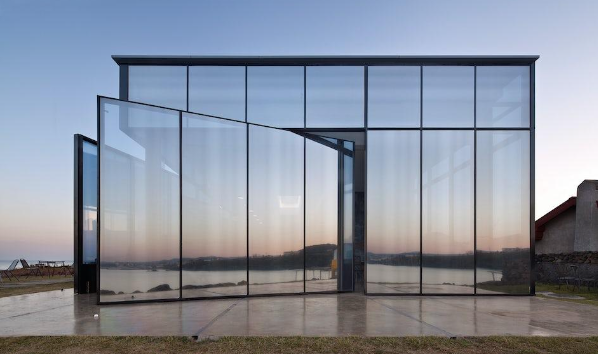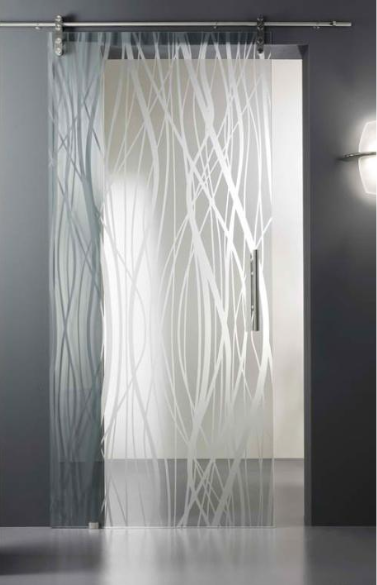TYPES OF GLASS AND HOW TO USE THEM
Glass is one of the most versatile materials used in interiors. It can be used as a barrier, window glass, glass door, glass partitions, and more. In this article, we will explore the various types of glass that can be used in interiors and how they can be utilized.
Regular Glass
Regular glass is transparent glass commonly used in windows and mirrors. It is the most common type of glass found in any home. Regular glass has low strength and allows light to pass through easily. Additionally, it is easy to clean and not prone to corrosion. Regular glass can be used as a barrier on stairs or as a partition in the bathroom,.
Tinted Glass
Tinted glass has a special coating that allows for color and light transmission to be altered. Tinted glass can be used as a decorative element to add style and individuality to an interior. It can also be used as a barrier or divider. Tinted glass allows for control over the amount of light passing through and can serve as protection from UV rays.


Tempered Glass
Tempered glass undergoes a tempering process that gives it high strength and impact resistance. It is safer than regular glass as it breaks into small safe pieces upon shattering. Tempered glass can be used as a glass door, barrier on balconies and stairs, and as a glass panel on kitchen cabinetry.
Smart glass
Smart glass is an innovative material that has the ability to change its transparency depending on external conditions or user commands. This is achieved through the use of technologies such as electrochromism, liquid crystal cells, or coating films. Smart glass can be used to create private areas in indoor spaces, partitions, windows, mirrors, and other interior and exterior design solutions.


Laminated glass
Laminated glass consists of two or more layers of glass bonded together with a polymer film. This type of glass is safe because in case of breakage, its layers do not shatter into small pieces but remain attached to the film. Laminated glass can be used as balcony and staircase railings, as well as glass walls or partitions.
Reflective glass
Reflective glass has a special coating that reflects light and creates a mirror effect. It can be used as a decorative element in interiors to increase space or create lighting effects. Reflective glass can also be used as a mirror or glass door.


Engraved glass
Engraved glass undergoes a special treatment that creates patterns or designs on its surface. This type of glass can be used as a decorative element in interiors to add charm. Engraved glass can also be used as a railing or divider.


Frosted glass
Frosted glass has a special treatment that makes its surface matte and opaque. This glass can be used as a divider to create private areas in large spaces. It can also be used as a decorative element to add charm to an interior.
Glass is a versatile material that can be used in interiors to create space, increase light, and add style. Different types of glass, such as tinted, tempered, laminated, reflective, engraved, and frosted glass, allow designers to create various effects and individual solutions in each specific case. One of the main advantages of using glass in interiors is its durability, lightness and transparency and the ability to let in light allow for the creation of bright and attractive design solutions using glass. In addition, glass is very easy to maintain and can be easily cleaned, making it an excellent choice for spaces with high levels of pollution or humidity.
There are several important considerations when using glass in interior design. Firstly, safety should be taken into account: the glass should be tempered or laminated to avoid accidental damage. Secondly, glass can be very slippery, so it should not be used on floors or stairs.
However, when used correctly, glass can add beauty and functionality to any interior. It can be used as dividing walls, doors, railings, partitions, and much more. It can also be used to create the effect of infinite space, such as when creating mirrored walls or floors.
One of the main advantages of using glass in interior design is its ability to let in light. This makes it an ideal material for use in spaces where light is very important. For example, in small spaces, glass partitions and doors can help to increase the space, while in spaces with little natural light, glass walls and windows can improve lighting.
In addition, glass can be used to create interesting design solutions. For example, engraved or frosted glass can add extra charm to any interior. Reflective glass can be used to create interesting light effects, while tinted glass can add extra privacy and mystery. Overall, glass is a versatile and aesthetic material that can be used in various design solutions in interior design.
OUR CONTACTS
- (347)860-7999
- sales@glass-desire.com
- 1951 68th street, Brooklyn NY 11204
- 9:00AM - 6:00PM | Monday - Friday
